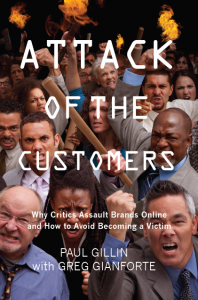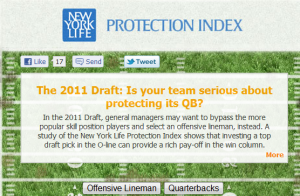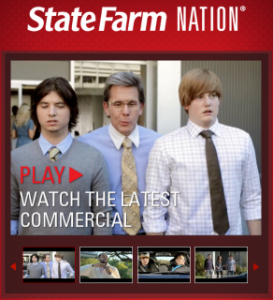This blog hasn’t been very active lately, but that’s because most of my contributions have appeared elsewhere. Here’s a roundup of what I’ve been musing about.
 10 Tips for Expanding Your Social Authority in 2015 – Midsize Insider, Jan. 1, 2015
10 Tips for Expanding Your Social Authority in 2015 – Midsize Insider, Jan. 1, 2015
I go into detail on strategies to get more out of your existing social presences and where to experiment with new ones. It comes down to basic blocking and tackling, and making sharing part of your daily routine.
Organic Facebook Marketing Is Dead; Think Customer Service Instead – Midsize Insider, Dec. 22, 2014
Numerous studies have shown that organic posts by Facebook pages are reaching only a tiny fraction of the audience they used to. This may finally be a wake-up call to marketers to share Facebook responsibility with customer service and to use Facebook as a listening post and customer-retention vehicle.
Research Shows CISOs Gaining Influence Even as Challenges Mount – Midsize Insider, Dec. 15, 2014
IBM’s annual CISO survey shows that security executives are finally getting a seat at the leadership table.
20 Ways to Enliven Those Boring Year-End Predictions – LinkedIn, Dec. 16, 2014
Annual predictions are now a dime a dozen, and most are predictable, self-serving and monotonous. Instead of following the pack and issuing the same old lame set of predictions, change up your angle and approach to make them stand out. Here are 20 ideas organized into eight categories.
 FIR B2B #20: Indium’s Awesome Engineers
FIR B2B #20: Indium’s Awesome Engineers
In Episode 20 of the For Immediate Release B2B podcast, we speak to Rick Short, Director of Marketing Communications at Indium Corp. Indium has created a creative and successful inbound marketing campaign that connects engineers to customers to solve problems in exchange for contact information. It’s paying off so well that the company can afford to increase its focus on lead quality because it has more than enough leads in the hopper.
FIR B2B #19: Doubts about Social Media’s Lead Gen Potential
Two new surveys cast doubt on the value of social media as a lead generation vehicle. One found that the top three value propositions of social media relate to ongoing customer engagement rather than lead generation. A second found organic social media marketing and social media advertising, which have some of the lowest costs per lead, also produced the worst quality leads.
In our interview section, we speak to Don Lesem and David Wagman of IHS and Engineering360, which is one of a suite of vertical communities the B2B information provider is launching to increase customer engagement.
FIR B2B #18: John Fox on Why Marketers Need to Get Out of the Office
John Fox has led the launch or re-launch of 44 companies, resulting in double and triple-digit growth for every client served. He thinks all the talk of a radically new B2B buyer journey is overblown. The process hasn’t really changed all that much, he says in this interview, and he has provocative thoughts on what content really motivates buyers.








 Paul Gillin is a writer, speaker and online marketing consultant who specializes in helping businesses use content to reach customers. A popular speaker and writer, he has addressed more than 150 conferences and groups and published more than 200 articles about social media marketing since 2008. His four previous books about social media and online communities include The New Influencers, Secrets of Social Media Marketing, The Joy of Geocaching and Social Marketing to the Business Customer.
Paul Gillin is a writer, speaker and online marketing consultant who specializes in helping businesses use content to reach customers. A popular speaker and writer, he has addressed more than 150 conferences and groups and published more than 200 articles about social media marketing since 2008. His four previous books about social media and online communities include The New Influencers, Secrets of Social Media Marketing, The Joy of Geocaching and Social Marketing to the Business Customer. Greg Gianforte has started five successful software companies. He founded RightNow Technologies in 1997 with a mission to rid the world of bad experiences. The company enjoyed 15 years of continuous growth. At the time of its sale to Oracle in 2011, it had more than 2,000 large customers, 1,100 employees and $225 million in annual revenue.
Greg Gianforte has started five successful software companies. He founded RightNow Technologies in 1997 with a mission to rid the world of bad experiences. The company enjoyed 15 years of continuous growth. At the time of its sale to Oracle in 2011, it had more than 2,000 large customers, 1,100 employees and $225 million in annual revenue.






 The race to socialize the Web got more intense this week with a
The race to socialize the Web got more intense this week with a 